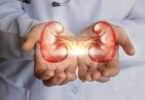Ebstein’s anomaly is a rare heart defect, present at birth, affecting one of the four heart valves. In Ebstein’s anomaly, the tricuspid valve between the two heart chambers on the right side does not work properly, the valve is sunk inside the right ventricle, and one or two of its leaflets are stuck to the heart wall.
Ebstein’s anomaly can also be associated with other cardiac malformations.
If your child has shortness of breath, coughs a lot, bluish color to the skin and under the fingernails, he may be showing signs of Ebstein’s anomaly.
If an underlying problem such as congenital heart disease is suspected, or if you have other signs and symptoms that might suggest Ebstein’s anomaly, he or she may recommend several tests, including: Echocardiogram, Electrocardiogram (ECG), Chest X-ray, Cardiac MRI, Pulse oximetry Holter monitor, stress test, electrophysiology study and cardiac catheterization.
Treatment of Ebstein’s anomaly depends on the severity of the defect, and the usual signs and symptoms. The goal of treatment is to reduce symptoms and prevent further complications, such as heart failure and arrhythmias.
Some children with Ebstein’s anomaly do not require treatment. Treatments may include: Regular monitoring, Medications, Surgery. If you have severe Ebstein’s anomaly and your heart is not working properly, you may need a heart transplant.








